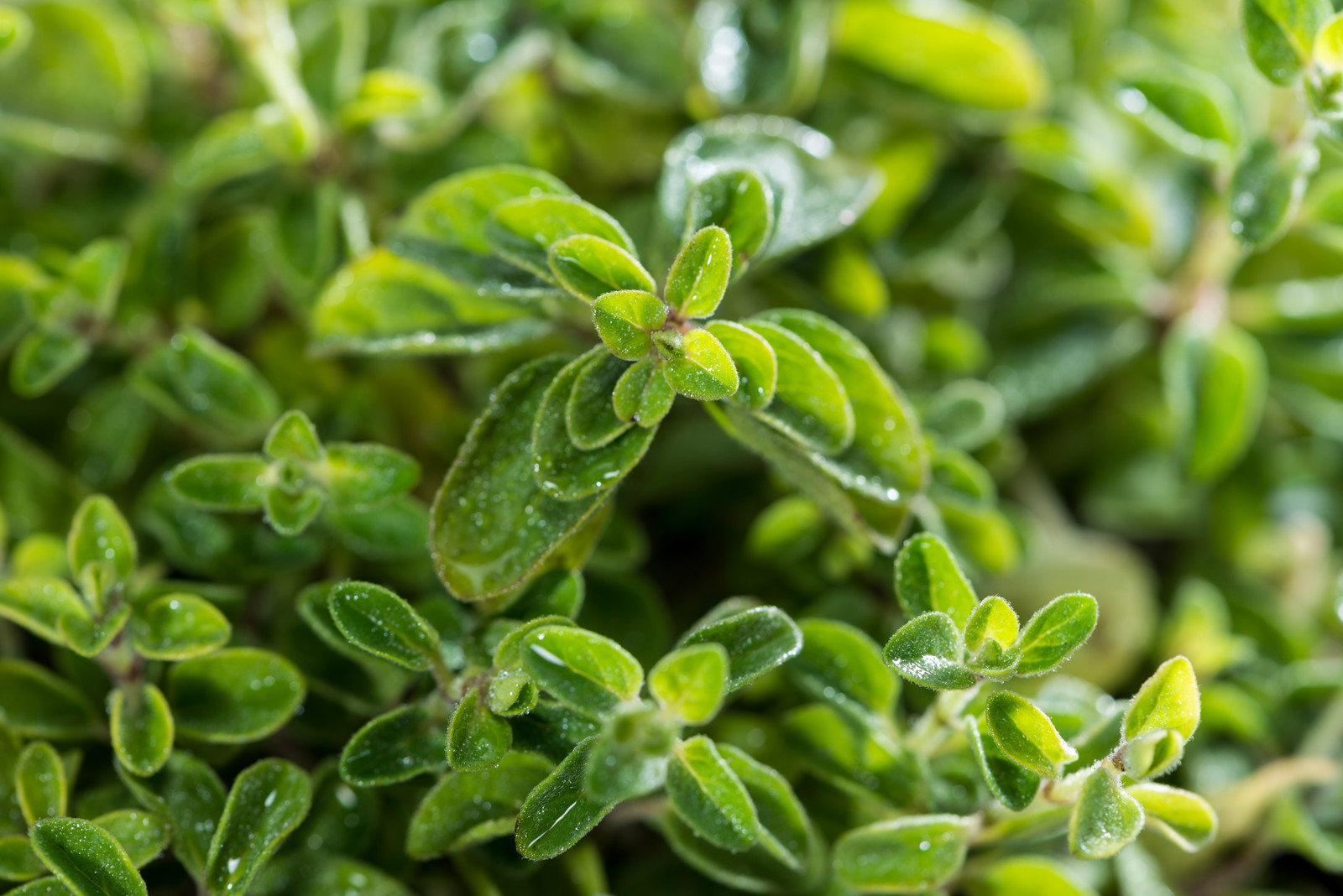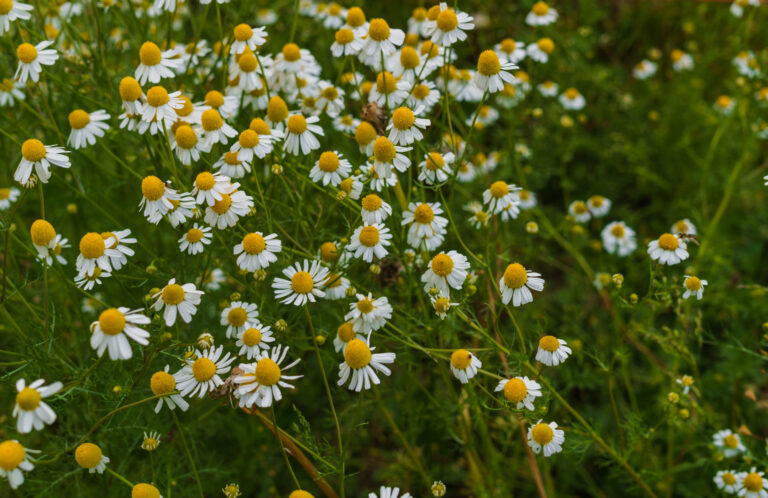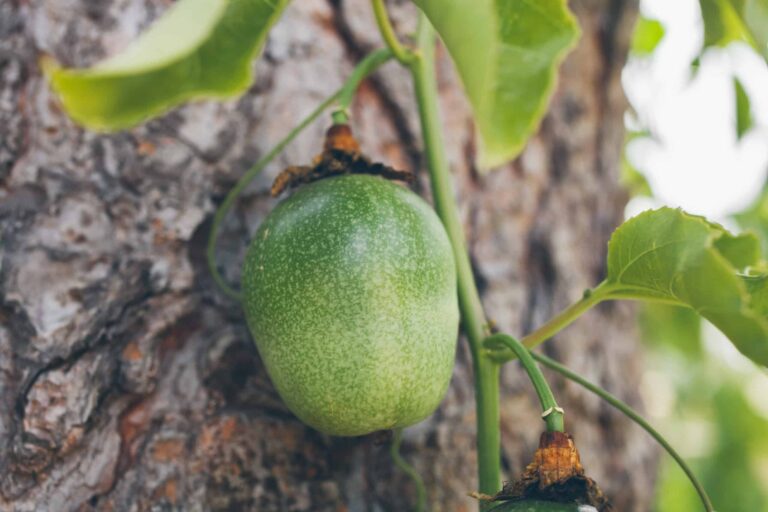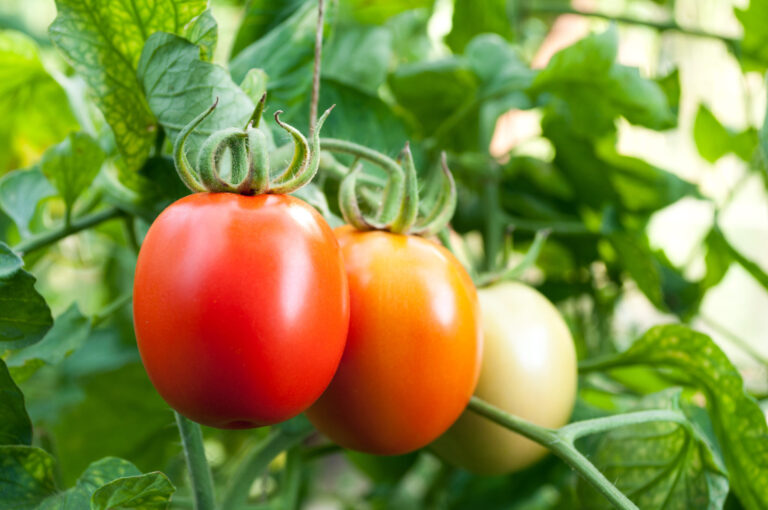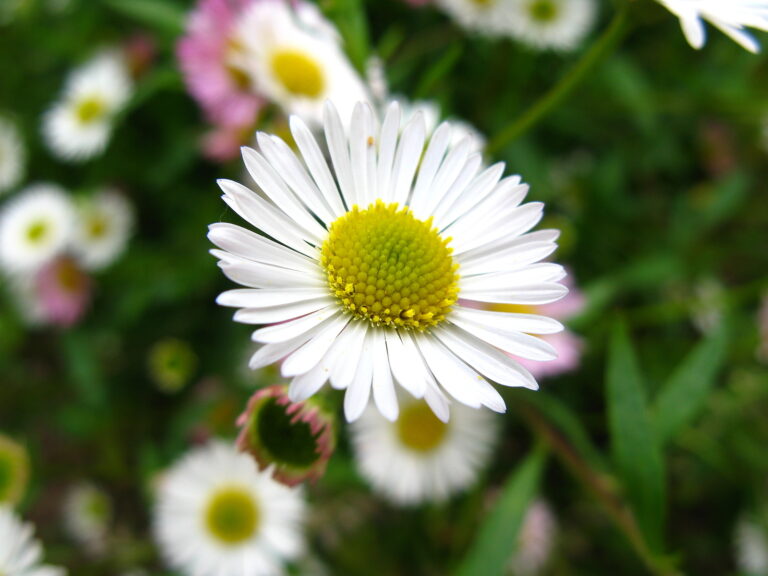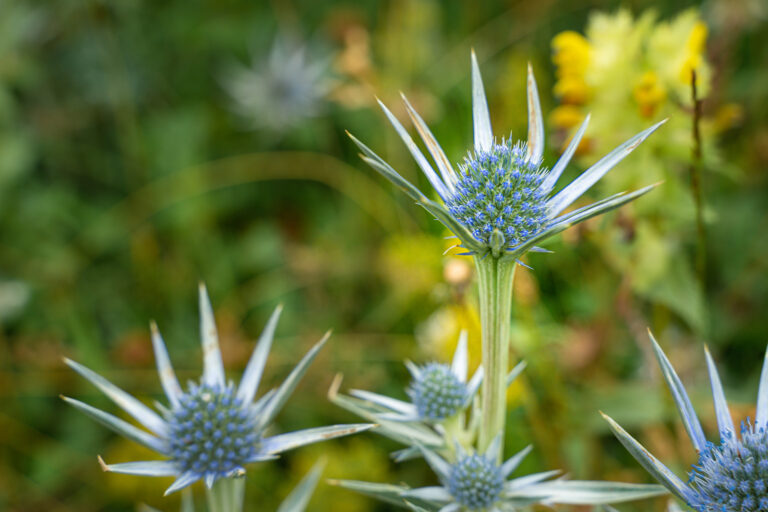How to Plant, Grow, and Harvest Oregano
Oregano is a strong-flavored herb sometimes called wild marjoram (it is closely related to sweet marjoram). Oregano leaves are used fresh or dried to flavor many cooked foods including tomatoes, sauces, salad dressings, and marinades for grilled meats. The flavor of oregano is pungent, spicy, and sometimes bitter. Oregano is often used in Spanish and Italian cooking.
Oregano should not be confused with marjoram, also called sweet marjoram. Marjoram is a subspecies of oregano. Marjoram is delicately flavored when compared to oregano. It has a sweet, floral fragrance. While oregano is used early in the cooking process (especially dried oregano), marjoram is best added at the end of cooking.
Oregano and marjoram are members of the Mint family. Marjoram being a subspecies of oregano, the plants are nearly indistinguishable in appearance, but there are differences.
The best-flavored oreganos usually have clusters of white flowers.
Articles of interest:
- How to Grow Herbs
- How to Start an Herb Garden
- Best Herbs for Container Growing
- Herbs for Cool Season Growing
- Grow 20 Herbs for Cooking
Here is your complete guide to growing oregano!
Where to plant oregano
- Best location: Plant oregano in full sun; it will tolerate light shade.
- Soil preparation: Grow oregano in loose, well-drained soil. Oregano prefers a soil pH of 6.0 to 7.0. Oregano can thrive in poor soil that is well-drained.
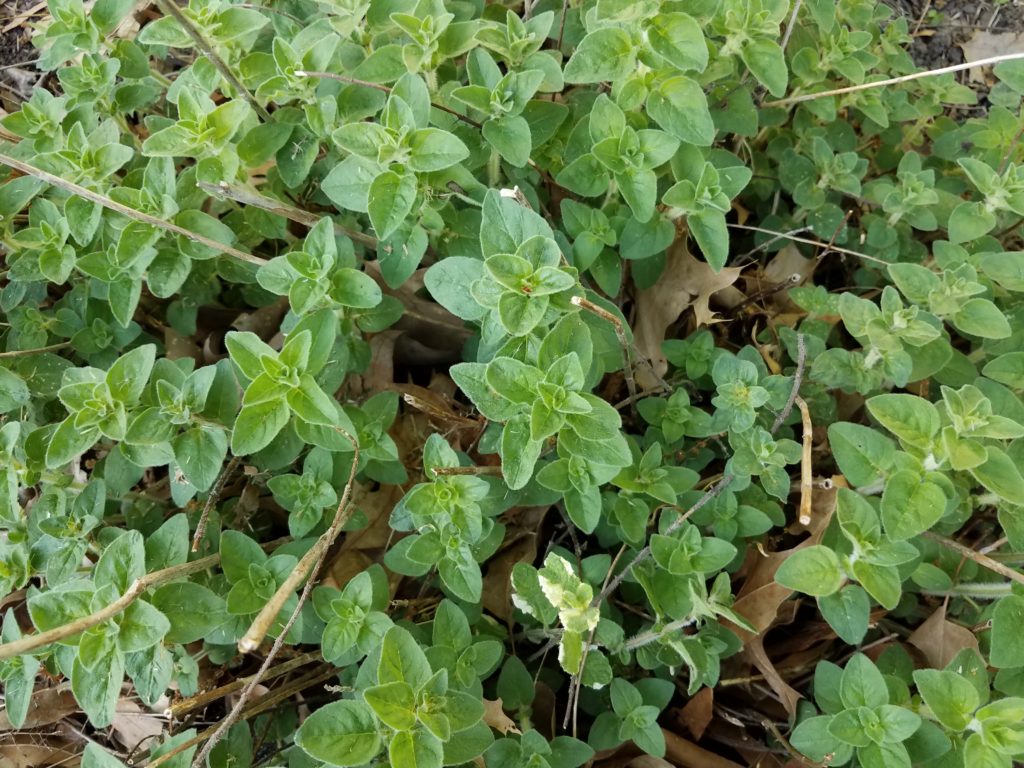
When to plant oregano
- Seed starting indoors: Sow oregano indoors as early as 4 weeks before the average last frost date. Oregano seed takes 10 to 15 days to germinate; sow seed at 70°F for optimal germination. Seeds germinate best in the light; cover seeds with cheesecloth until seedlings begin to push up.
- Transplanting to the garden: Transplant seedlings out after the last frost. Oregano can be grown from root divisions taken in the fall, overwintered indoors, and set out in spring.
- Outdoor planting time: Sow oregano seed in the garden on the average date of the last frost in spring. The soil temperature should be 45°F or warmer.
How to plant oregano
- Planting depth: Sow seed ¼ inch deep; thin successful seedlings or set transplants to 6 inches apart.
- Spacing: Space oregano plants 12 inches apart. Space rows 18 to 24 inches apart.
- How much to plant: Grow 2 to 4 plants for cooking; grow 6 to 12 plants for preserving.
Oregano companion plants
- Companion planting: Oregano grows well with all vegetables and herbs. Oregano flowers attract butterflies and beneficial insects.
Watering and feeding oregano
- Watering: Give oregano regular even water until it is established. Once established, water oregano sparingly allowing the soil to dry between waterings. Moist soil will cause oregano to be less flavorful.
- Feeding: Foliar feed oregano by spraying with compost tea or liquid seaweed extract 2 to 3 times during the growing season
Oregano care and maintenance
- Care: Keep oregano pinched back to induce bushy growth and for the best aroma and flavor; flowering will result in a loss of leaf flavor. Cut back plants nearly to the ground once or twice in the summer; this will stimulate fresh growth. Divide clumps every three years and replant healthy, rooted segments.
- Mulching: Mulch around oregano with aged compost in hot weather to keep the roots cool and slow soil moisture evaporation.
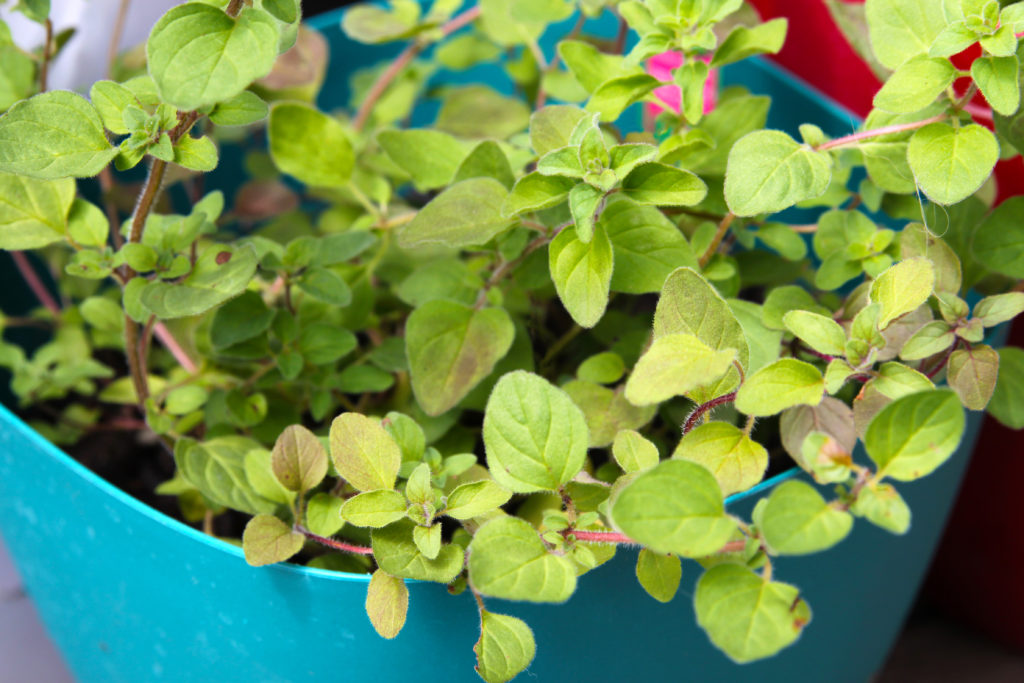
Container growing oregano
- Container growing: Oregano grows easily in containers. Select a container 6 inches deep. Potted oregano can be grown indoors in a bright, sunny window or under fluorescent lights. Replace container plants every 3 years when they become woody.
- Winter growing: In cold-winter regions, divide plants in fall and over-winter them indoors for re-planting out in spring. If you over-winter plants outdoors cover them with a heavy mulch of leaves.
Oregano pests and diseases
- Pests: Oregano has no serious pest problems. Aphids and spider mites may attack oregano but they can be sprayed away with a strong stream of water; a large infestation can be treated with insecticidal soap.
- Diseases: Oregano grown in wet soil or wet weather may suffer from root rot or damping off.
How to harvest oregano
- When to harvest: Cut fresh leaves as needed once plants are 4 to 6 inches tall. Cut-and-come-again harvesting will renew plants. The flavor of leaves is best before the plant flowers.
- How to harvest: Snip stems and leaves with a garden clipper or scissors.
Oregano in the kitchen
- Flavor and aroma: Oregano has a hot peppery flavor.
- Leaves: Use leaves to flavor tomato sauces, marinated vegetables, roasted peppers, pasta, pizza, and spaghetti. Add oregano to eggs, cheeses, mushrooms, black beans, zucchini, potatoes, and eggplant. Use oregano to flavor roasted and stewed beef, pork, and poultry.
- Culinary companions: Match oregano with parsley, rosemary, sage, and thyme. Oregano pairs well with tomatoes, olives, lemon, and garlic. Add dried oregano at the start of cooking.
- When to add oregano: Given its pungent flavor, dried oregano is used more frequently during the cooking process, as the flavors are easier to control. Add dried oregano at the beginning of cooking. Fresh oregano is generally used as a garnish or added at the end of cooking.

Preserving and storing oregano
- Refrigeration: Store unwashed leaves in the refrigerator for a few days in a sealed bag.
- Drying: Dry leaves for long storage. Dry leaves on a cookie sheet in a barely warm oven for half a day. Or dry leaves by hanging cut stems together upside down in a cool, dry, dark place or in a paper bag for about 2 weeks.
- Freezing: Freeze leaves in tomato juice or water.
Oregano propagation
- Seed: Stratify oregano seeds for one week then sow indoors; germination in about 7 to 14 days.
- Cuttings: Root 5-inch stem cuttings in summer; dip the cut ends of stems in a rooting hormone then set in just moist organic potting soil.
- Division: Divide roots of established plants in spring or autumn and replant. Division is the best way to ensure you get the flavor of the plant you are already growing; growing from seed can be iffy.
Oregano varieties to grow
When choosing oregano to get the flavor you want, taste a tiny bit of the leaf or rub a leaf to smell the aroma. Tasty oreganos usually have clusters of white flowers.
- Wild oregano Origanum vulgare does not have the flavor of other varieties.
- Common oregano, also called Greek oregano: Origanum vulgare hirtum has the peppery flavor associated with oregano. It is sometime labeled O. heracleoticum.
- Compact oregano: O. vulgare ‘ var. ‘Compactun Nanum’—ground cover just 3 inches tall.
- Golden creeping oregano: O. vulgare ’Aureum’ is mild flavored.
- Syrian oregano: maru
- Kaliteri oregano: ‘Kaliteri’ has silver-gray leaves
- Turkestan oregano: O. tyttanicum
- Small-leafed oregano: O. microphyllum
- Dittany of Crete (O. dictamnus) has thick silvery, fuzzy, almost round leaves ¾ inch across. Grows to 12 inches tall. Use fresh or dry leaves for tea or seasoning.
Get to know oregano
- Botanical name and family: Origanum vulgare hirtum (Lamiaceae—mint family)
- Origin: Most of Europe and temperate Asia
- Type of plant: Oregano is a herbaceous tender perennial, usually grown as an annual.
- Growing season: Summer
- Growing zones: Grow oregano in Zones 5 to 10 as an annual; it prefers hot climates.
- Hardiness: Oregano is resistant to heat; some resistance to cold.
- Plant form and size: Upright growth to 2½ feet high and 2 to 3 feet wide. Stems arise from a clump of leaves; stems are branching towards the top. The plant tends to spread by invasive underground stems.
- Flowers: Oregano has inconspicuous white, lavender, pink or purplish-pink flowers with five equal segments. Flowers form clusters at the ends of stems and branches.
- Bloom time: Oregano blooms midsummer to early fall.
- Leaves: Oregano has oval to ovate dark green leaves that come to a blunt point at the tip; leaves are often larger and coarser than those of sweet marjoram.
Also of interest:
- Anise
- Anise Hyssop
- Arugula
- Basil
- Bay
- Bee Balm
- Borage
- Calendula
- Caraway
- Catnip
- Chamomile
- Chervil
- Chives
- Cilantro-Coriander
- Clary
- Costmary
- Cress
- Dill
- Fennel, Sweet
- Horseradish
- Hyssop
- Lavender
- Lemon Balm
- Lemongrass
- Lemon Verbena
- Lovage
- Marjoram
- Mint
- Nasturtium
- Oregano
- Parsley
- Perilla
- Rosemary
- Sage
- Salad Burnet
- Savory
- Scented Geranium
- Shiso
- Sorrel
- Stevia
- Sweet Cicely
- Tarragon
- Thyme
Related articles:
Best Herbs for Container Growing
Planning the Home Fruit Garden
Garden Planning Books at Amazon:
- Vegetable Garden Almanac & Planner
- Kitchen Garden Grower’s Guide Vegetable Encyclopedia
- Vegetable Garden Grower’s Guide
- Tomato Grower’s Answer Book

